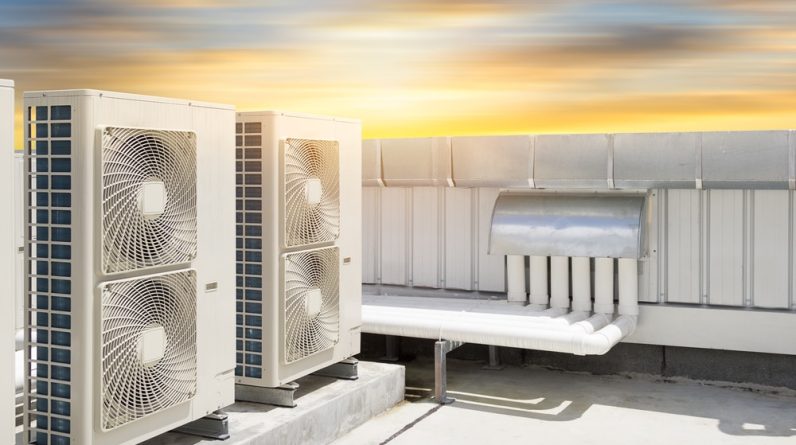
A split air conditioning system comprises two main components: the indoor unit and the outdoor unit. The indoor unit is typically mounted on a wall and contains the evaporator coil, while the outdoor unit contains the compressor and condenser coil.
The indoor unit draws warm air from the room and passes it over the evaporator coil. The refrigerant within the coil absorbs the heat from the air, and the cooled air is then blown back into the room. The refrigerant is then sent to the outdoor unit, where the compressor pressurizes and sends it through the condenser coil. As the refrigerant passes through the condenser coil, it releases the heat absorbed from the indoor air. The hot air is blown out of the outdoor unit, and the cooled refrigerant is sent back to the indoor unit to start the process over again.
The System in Detail
Let’s take a more detailed look at how each split air conditioning system component works.
Indoor Unit: The Evaporator Coil
The indoor unit of a split air conditioning system contains the evaporator coil, responsible for absorbing the heat from the warm air in the room. The evaporator coil is typically made of copper, aluminum, or another conductive material and is filled with refrigerant.
When the air from the room is drawn into the indoor unit, it passes over the evaporator coil. As the air moves over the coil, the refrigerant within the coil absorbs the heat from the air. The indoor unit’s fan blows cool air back into the room.
Outdoor Unit: The Compressor and Condenser Coil
The outdoor unit of a split air conditioning system contains the compressor and the condenser coil. The compressor is responsible for pressurizing the refrigerant and sending it to the condenser coil, which releases the heat from the refrigerant.
The refrigerant is sent to the compressor in a low-pressure, gaseous state. The compressor then pressurizes the refrigerant, turning it into a high-pressure, hot gas. The hot refrigerant is sent to the condenser coil, where the heat is released into the air. The cooled refrigerant is then sent back to the indoor unit to start the process over again.
Thermostat Control
The Brisbane air conditioner is controlled by a thermostat, which allows the user to set the desired temperature. The thermostat will turn the system on when the room temperature rises above the desired level and off when it falls below the set point. This helps to maintain a comfortable temperature in the room and helps to reduce energy consumption.
Benefits of a Split Air Conditioning System
A split air conditioning system has many benefits over other air conditioning systems. Some of these benefits include:
Energy Efficiency: Split air conditioning systems are generally more energy-efficient than other systems. They use less energy to cool a room or home, which can help lower energy costs and reduce the environmental impact.
Quiet Operation: The indoor unit of a split air conditioning system is typically very quiet, making it ideal for use in bedrooms or other quiet spaces. The noise produced by the outdoor unit is also minimal, making it a good option for use in urban areas.
Zone Control: A split system air conditioning Brisbane can provide zone control, which allows users to control the temperature of individual rooms or areas. This is ideal for homes or buildings with varying heating and cooling needs.






